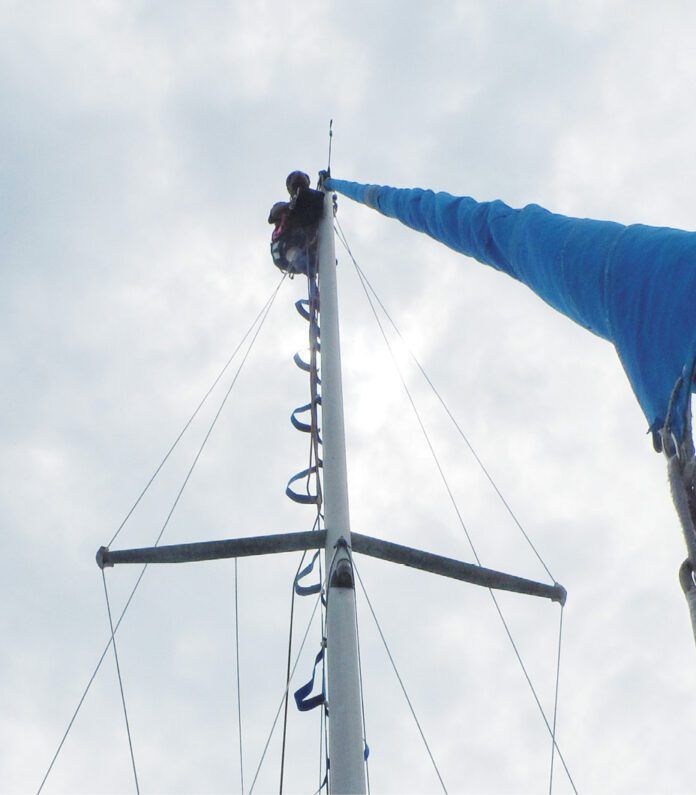Mast climbing accidents have occurred because the crew member either misunderstood or did not perform their duties attentively and properly. Belaying should be considered a precision job with zero tolerance for error.
• Actively tail the winch. The tail can jump out of a self-tailing winch. Self-tailing with an electric winch is even riskier.
• Hoist through a locked jammer. In this way, if the helper botches the belay, the jammer will still grab. Some jammers have a specific position for this function.
• Leave no slack. If the climber helps by climbing the rigging or comes off belay and moves around, light tension must still be maintained. If there is slack, there can be shock loading (halyards are non-stretch and are not designed for this) and turns can jump off the winch. This has resulted in at least one fatality. The no-slack rule also applies to when belaying a climber using a mast ladder or ascenders.
• A secure means of locking off the belay. Use a line jammer, a large cleat, or even tie-off the tail to something strong. This is in addition to the main climbing support. The belayer must have a means of “escaping the belay,” either to fetch tools or summon help (no talking on the cell phone). Finally, the climber should be secured by a separate means (a pair of 5,000-pound slings to separate strong fitting, or looped around the mast in a locking manner) if the belay is not tended.
• Belay to one side. It is best if the belayer is not directly below the climber, particularly once he begins working. Although most tools will be secured to the climber with lanyards, mistakes happen and a wrench becomes a missile after it has fallen 50 feet.
• Tie yourself off when not moving. The climber must carry a few slings and carabiners (UIAA approved) for securing himself at the masthead. This provides both increased security and stability. Always clip a few extra slings and carabiners onto the back or your harness. Countless times they have come in handy for clipping something to stabilize my position or work around an unexpected tangle or development. Once I got to the top and realized the top of the 2:1 main halyard was chafed and needed to be trimmed and re-tied. I had to un-weight the line I had just climbed! With extra slings for clipping off, it was no problem.
Practical Sailor’s archives have several reports that look at going aloft from different angles:
“Mast Steps: No Perfect Design,” PS September 2000
“Practical Sailor Tests Bosun Chairs and Harnesses,” PS June 2010
“Simple Tricks for When You’re Gong Aloft,” PS July 2020
“Going Aloft with the Multi-Use Prusik,” PS November 2021
“Going Aloft Sans Butterflies,” Inside Practical Sailor blog post
“Going Aloft Safely,” Inside Practical Sailor blog post







































